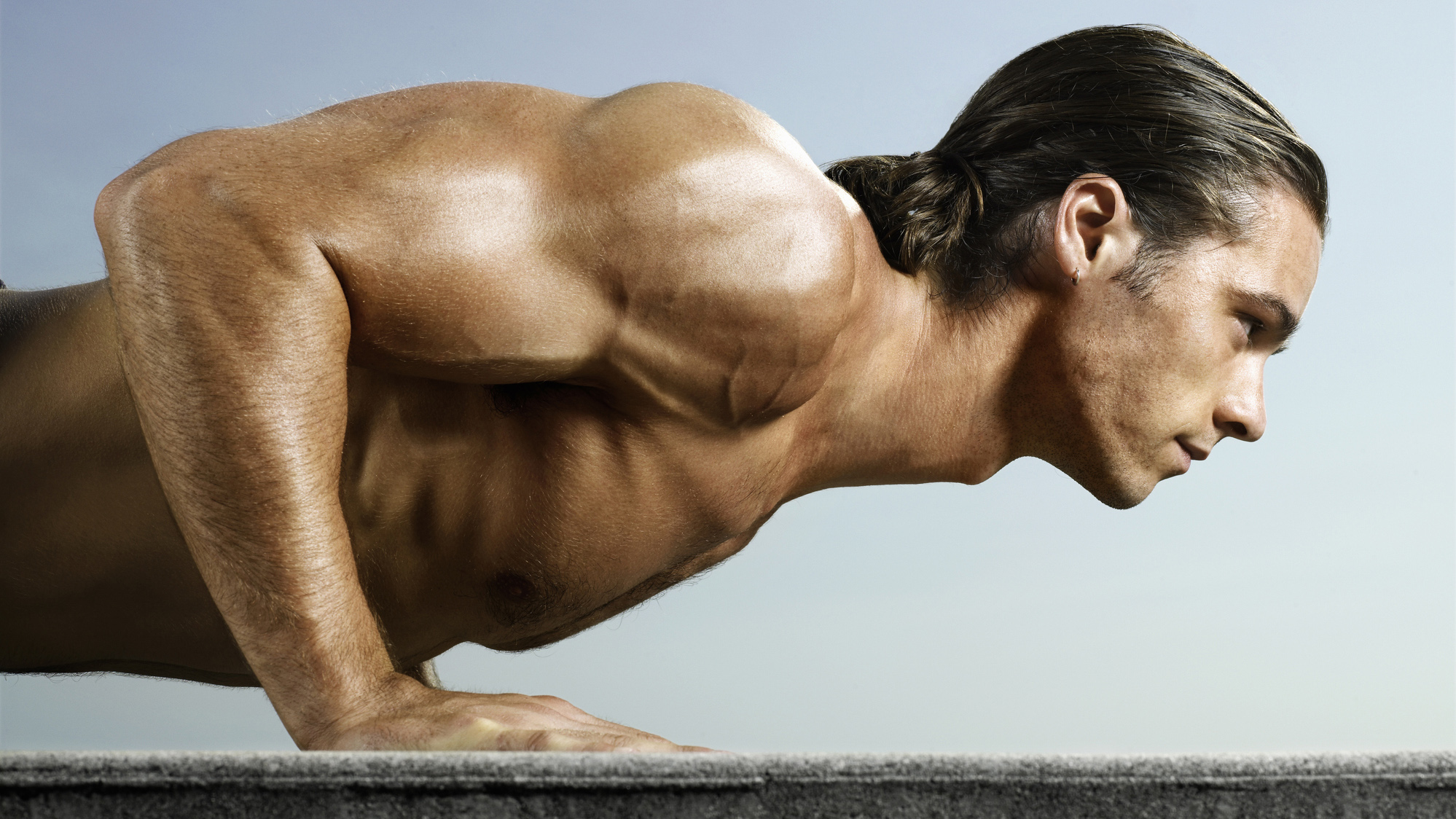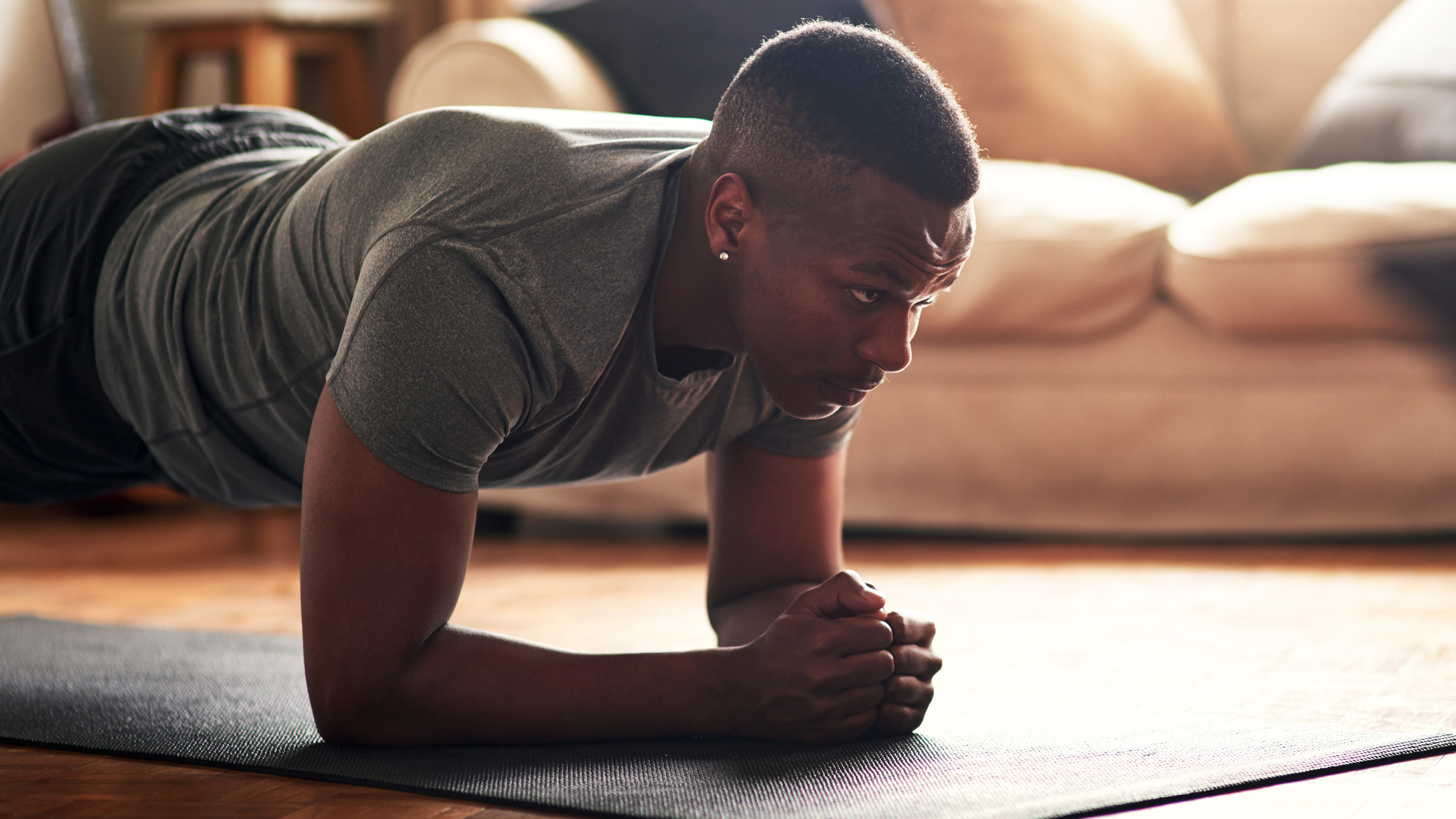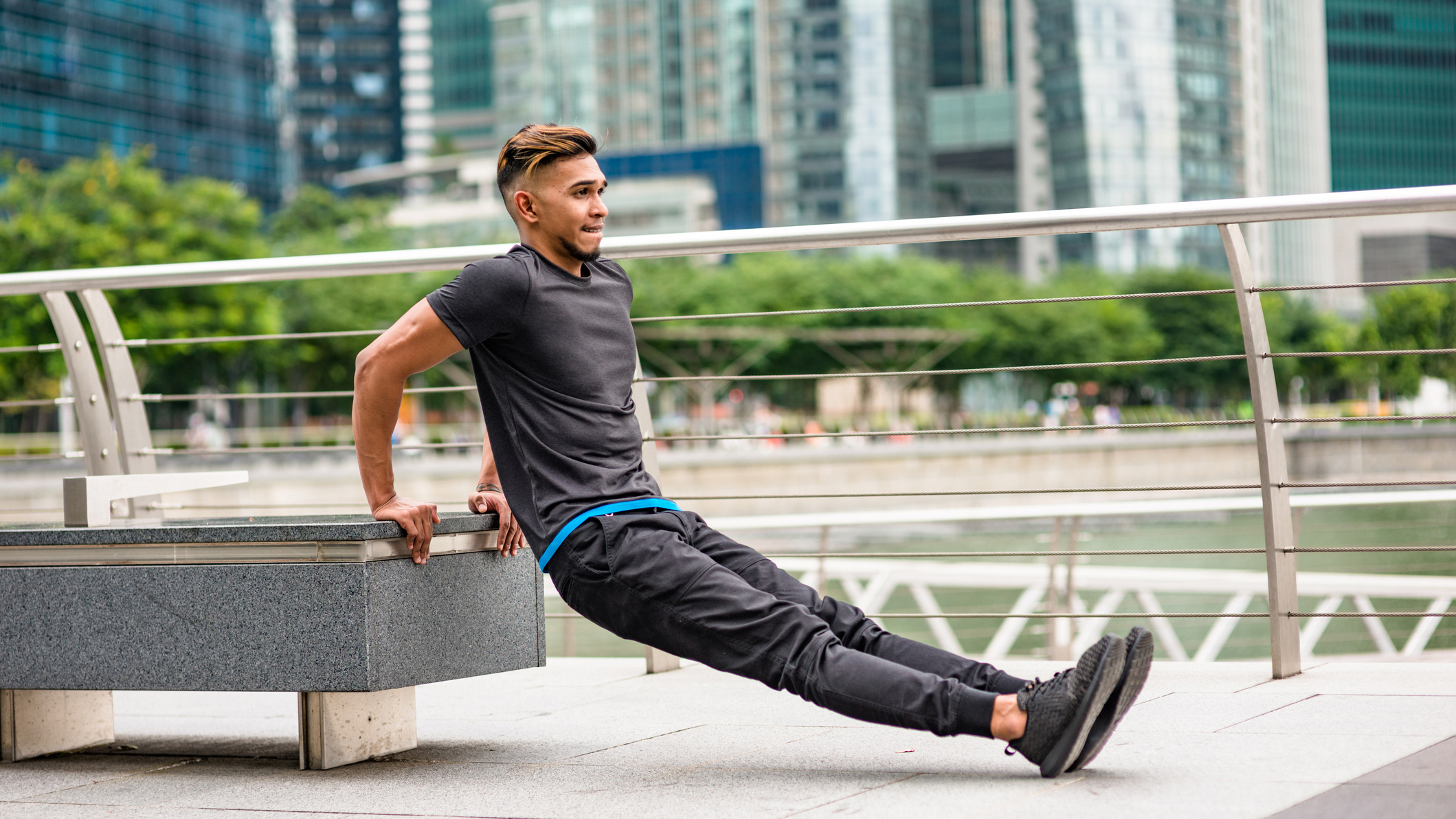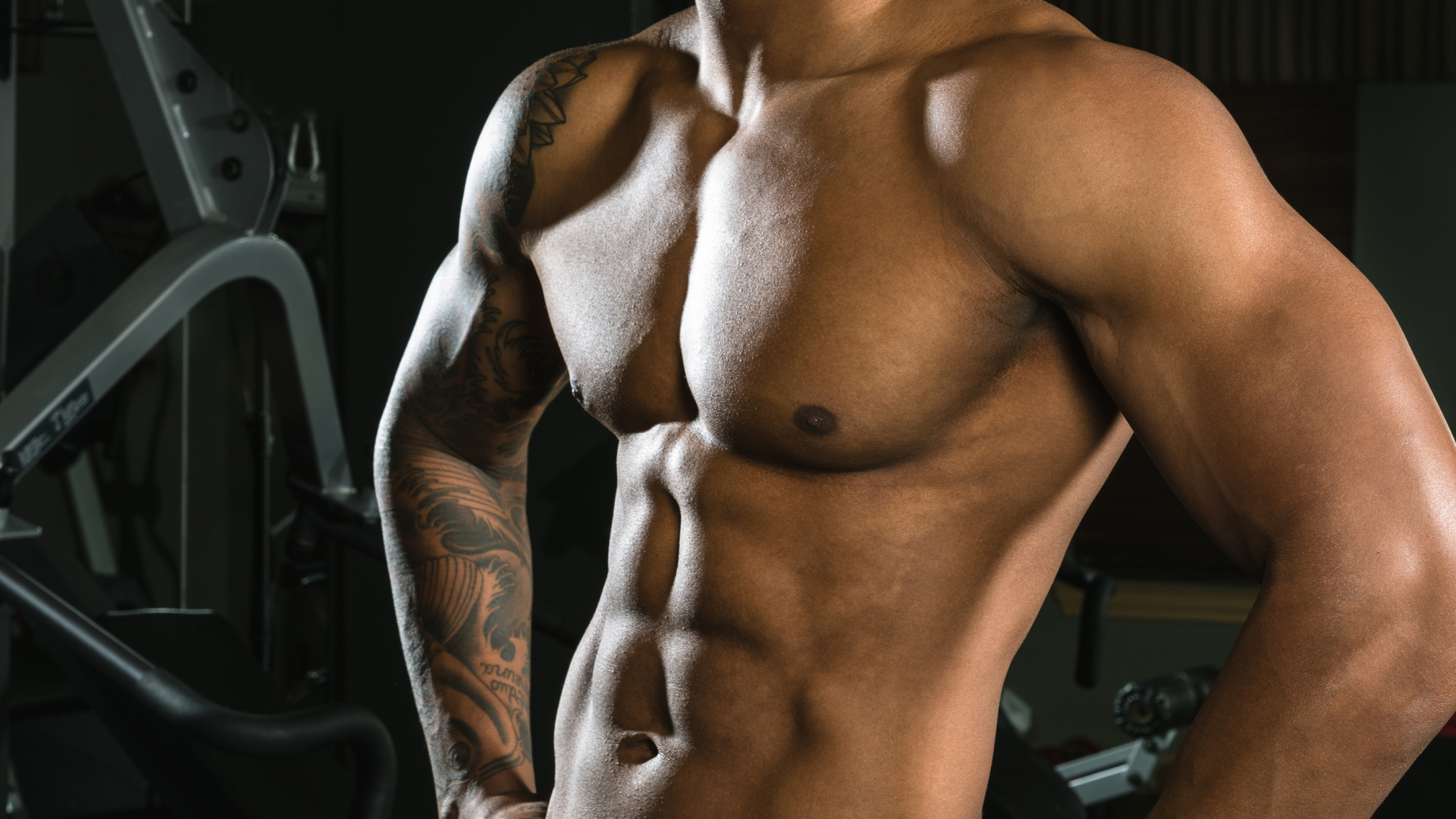Can't do push ups? This is the easiest push up variation plus tips to get better at press ups
Lack the strength to do push ups? Follow our advice to master the secret art of the press up sooner


Can't do push ups? You are not alone. Even the easiest press up variation requires some strength, let alone the hardest variations such as the biceps push up and diamond push up. It is still worth the hassle to learn how to do push ups, though, as this is one of the best bodyweight compound exercises that can build big pecs and sculpt big arms too.
• The best push up workouts to get big arms AND a broad chest
There are three parts of the body that needs to be push up ready and we'll share details below on how to work all of them efficiently. Push ups are just as good as a bench press if you want to get big arms and as an added bonus, performing push ups don't require the best home gym equipment either.
Push ups can also be included in a variety of exercise routines, such as this calisthenics home workout, and can give you a full body workout in just one move. If you are planning on putting a push-pull workout routine together, push ups should be performed on push days. Also, you can combine press ups with kettlebell swings and create a minimalist full body workout that uses two-exercises only, yet moves all your body at the same time.
What are the three areas that need some extra TLC before you get down to pumping out clean push up reps? What is the easiest push up variation? Read on to find out.
Fitbit Ionic Fitness Smartwatch | On sale for £185 | Was £249.99 | You save £64.99 at Amazon
The Ionic is Fitbit's most competent fitness smartwatch, or at least the one that's aimed at people who have an active lifestyle. The Ionic has built-in GPS and storage for music, continuous heart rate tracking feature and is compatible with the Fitbit App (of course).
What is the easiest push up variation?
Unlike what most people think, the easiest push up variation is not the knee push up as doing proper knee push ups require core strength and enough muscle power in the arms and pecs so you are able to push up 2/3 of your bodyweight away from the ground.
If you are really struggling with doing even knee push ups, you should try wall push ups first as this variation takes most of your bodyweight out of the equation while your muscles get used to the movement and you get stronger.
Get all the latest news, reviews, deals and buying guides on gorgeous tech, home and active products from the T3 experts
The way to progress from here is to reduce the incline as time goes by: start with standing upright and bending the arms only, then gradually increase difficulty by stepping further away from the wall and eventually leaning more and more forward. You can use (sturdy) furniture to lean against, such as chest of drawers, the kitchen top, a chair etc.
Make sure that you squeeze the core and the glutes and pay attention to the position of the elbow as you perform wall and/or incline push ups. Performing any exercise with the correct form is more important than rep count.

Area #1: core
You might think you only need the arm strength to do push ups and if that's the case, then you in the wrong, big time. If you ever tried doing planks, you know just how hard it is to keep your body straight for longer than even just 30 seconds. And to do push ups, you will have to keep your body straight for longer than 30 seconds at a time.
To build core strength, you'll need to work your abs, obliques and your lower back too. We recommend doing some core exercises such as the aforementioned planks or maybe knee planks at the beginning and working way up to standard than hardstyle planks. For more inspiration, have a look at the best core exercises here.
Having a strong core can also help you lift heavier, for the same reason it can help you churn out more push ups reps, not to mention other benefits such as improved posture and sleep.

Area #2: triceps (and delts)
If you want big arms, you must focus on building triceps and shoulder definition as opposed to being obsessed over having a big biceps. Conveniently enough, push ups work the triceps and delts the most and does little to your biceps. You can try doing biceps push ups, that might activate the front of your upper arm more but move requires even more muscle power than standard push ups.
You can start training your triceps by doing elevated box dips on a piece of furniture or plyo-boxes. The higher the incline, the easier it is to do dips and you can gradually decrease the incline and increase the intensity as you get stronger. Resistance band triceps kickbacks and overhead presses are also great moves to increase triceps strength.

Area #3: pecs
The last area you need to focus on if you are planning to get better at push ups are the pecs. Your chest muscles are working the hardest when doing push ups and therefore need to be the strongest so you can push yourself away from the floor effectively.
There are a range of exercises that work the pecs and many of them are listed in our get bigger pecs guide. In a home gym environment, you can do resistance band chest flys and resistance band bench presses to get your pecs ready for press ups. A muscle you would like to focus on the the top of the pectoralis major, the so called clavicular head. This muscle acts individually to flex the upper limb and sort-of connects the chest muscles and delts/arms (in layman's words).
- Try this 15-minute HIIT workout: it will melt belly fat and leave you lying on the floor

Matt Kollat is a journalist and content creator who works for T3.com and its magazine counterpart as an Active Editor. His areas of expertise include wearables, drones, fitness equipment, nutrition and outdoor gear. He joined T3 in 2019. His byline appears in several publications, including Techradar and Fit&Well, and more. Matt also collaborated with other content creators (e.g. Garage Gym Reviews) and judged many awards, such as the European Specialist Sports Nutrition Alliance's ESSNawards. When he isn't working out, running or cycling, you'll find him roaming the countryside and trying out new podcasting and content creation equipment.
